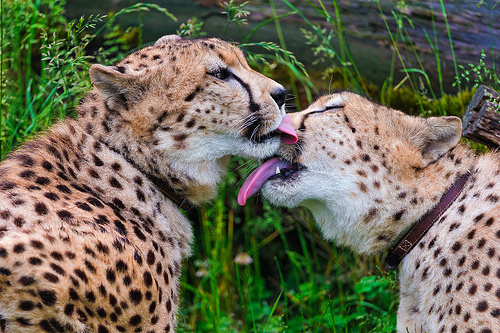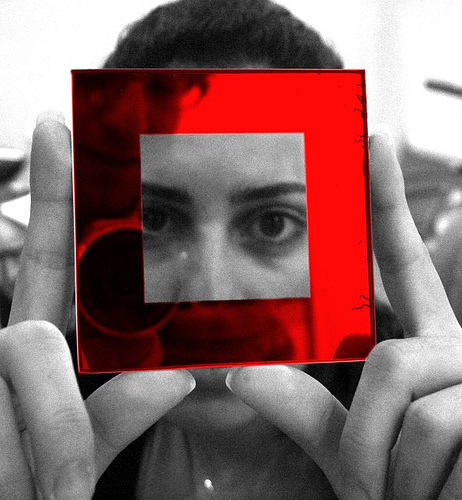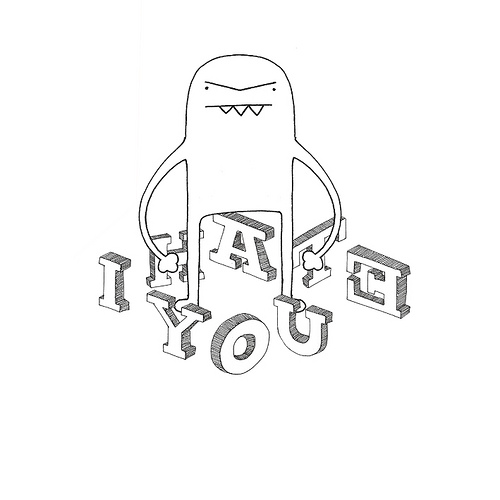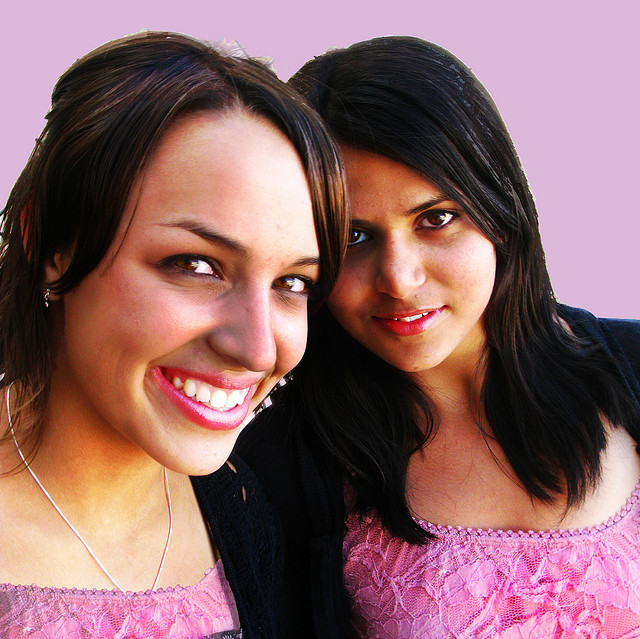Using “Each Other”
The reciprocal pronoun each other is used to identify mutual actions or feelings between two people or things. An example of the usage you’re probably familiar with is “we love each other.” If you were to describe the photo below, you might write the following:

Source: Cheetah brothers licking each others, Tambako the Jaguar,
Flickr
The cheetah on the right licked the cheetah on the left, while the cheetah on the left licked the cheetah on the right.
That sentence describes the picture but is wordy. Instead, you could use a reciprocal pronoun as follows:
The cheetahs licked each other.

Source: I see you in Red, you see me in Black
& White!, FlickrJunkie, Flickr
Using reciprocal pronouns is helpful when you are trying to make your writing more concise. For example, consider the following sentence:
He saw me, and I saw him.
It is clearer to write it as follows:
We saw each other.
Let’s look at two more sentences.

Source: I HATE YOU!, The Nothing Corporation,
Flickr
George hates Larry. Larry hates George.
Again, as the following sentence demonstrates, a reciprocal pronoun is clearer and less wordy:
George and Larry hate each other.
You could even write the following:
They hate each other.
The reciprocal pronoun each other is often used with the pronouns we and they.
 Using your notes, edit the sentences below by using reciprocal pronouns. When you’re finished, check your understanding to see some possible responses.
Using your notes, edit the sentences below by using reciprocal pronouns. When you’re finished, check your understanding to see some possible responses. - Lucy sent Dwayne a holiday card, and he sent Lucy a holiday card.
- She looked at him. He looked at her.
- Darla sent Peter a text message, and Peter sent her back a text message.
- I gave John a present. John gave me a present.
- The striped cat groomed the orange cat, while the orange cat groomed the striped cat.
- Lucy and Dwayne sent each other holiday cards.
- They looked at each other.
- Darla and Peter sent each other text messages.
- John and I gave each other presents.
- The cats groomed each other.
Using “Each Other’s”
Each other’s is the possessive form of each other and is formed by adding ’s to the pronoun. This pronoun indicates ownership of something. For example, read the following sentences:
Source: friends, deserttrumpet, Flickr
Julie spends the night at Lisa’s house often, and Lisa often spends the night at Julie’s house.
This sentence is wordy and needs to be streamlined. We can make this change as follows:
Julie and Lisa often spend the night at each other’s house.
Determining whether the noun that follows each other's is plural or singular is simple. Does each girl have more than one house? No, so house should be singular.
Now you try. For each sentence below, determine whether the missing pronoun is each other or each other’s. Respond by clicking on one box for each question.

1. Leo and Will know each other so well that they sometimes finish ________ sentences.
2. George and I really like _______.
3. The dogs spent a lot of time chasing _________ around the yard.
4. The dogs spent a lot of time chasing __________ tail.
 Bonus Question: Using your notes, answer the following question: In item number 1, why is the word “sentences” used rather than “sentence”?
Bonus Question: Using your notes, answer the following question: In item number 1, why is the word “sentences” used rather than “sentence”? “Sentences” is correct because Leo and Will speak many sentences, not just one sentence.